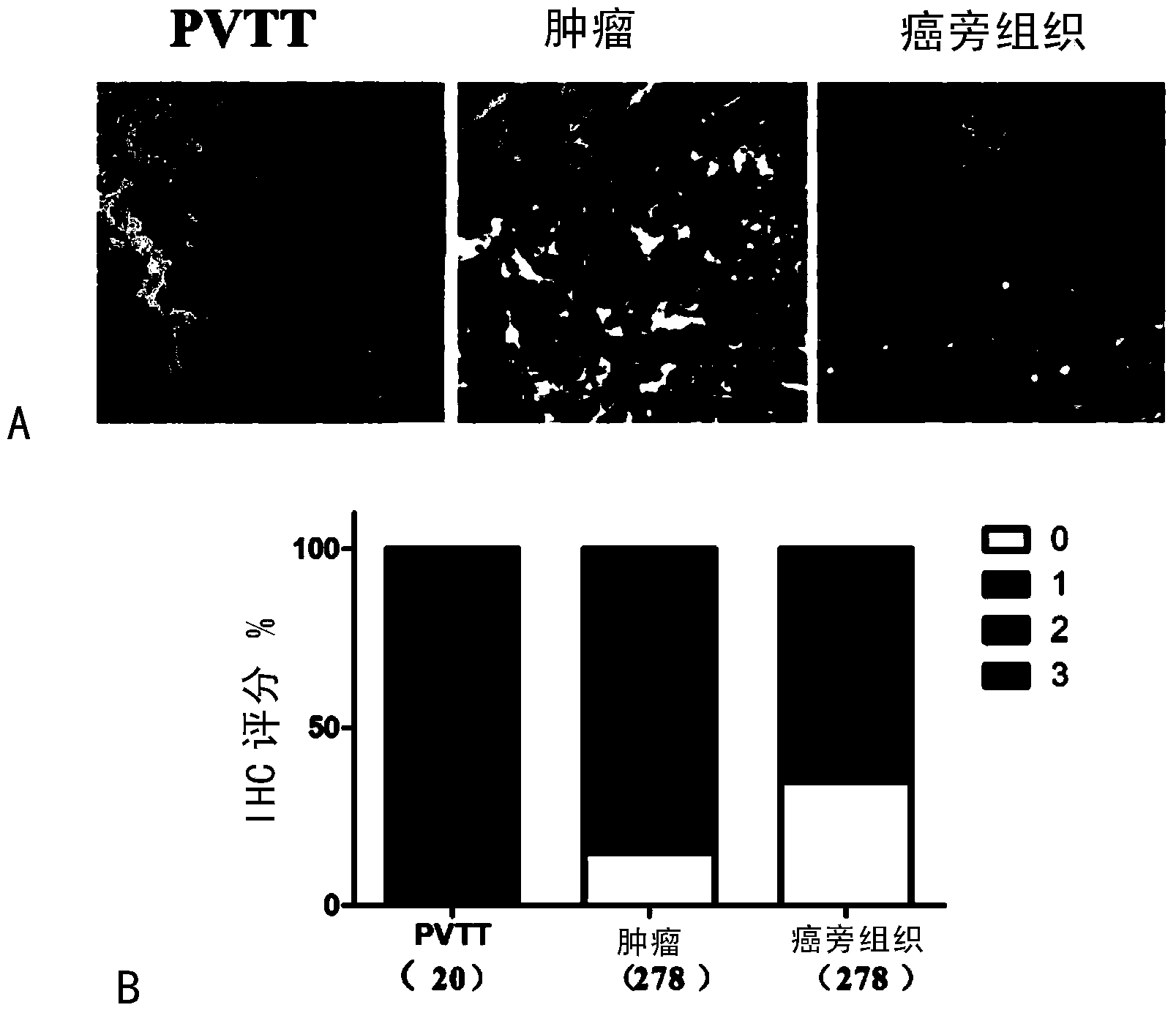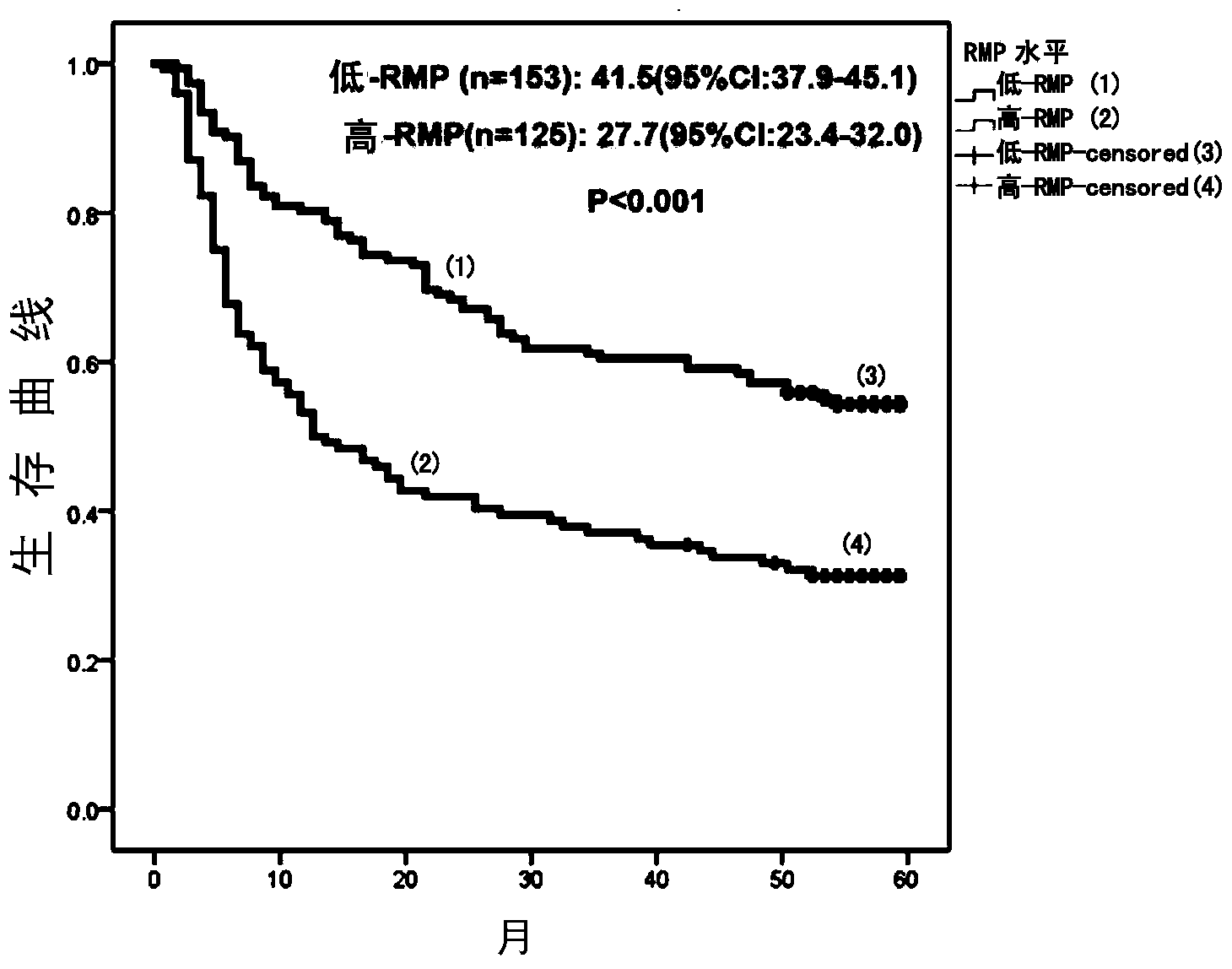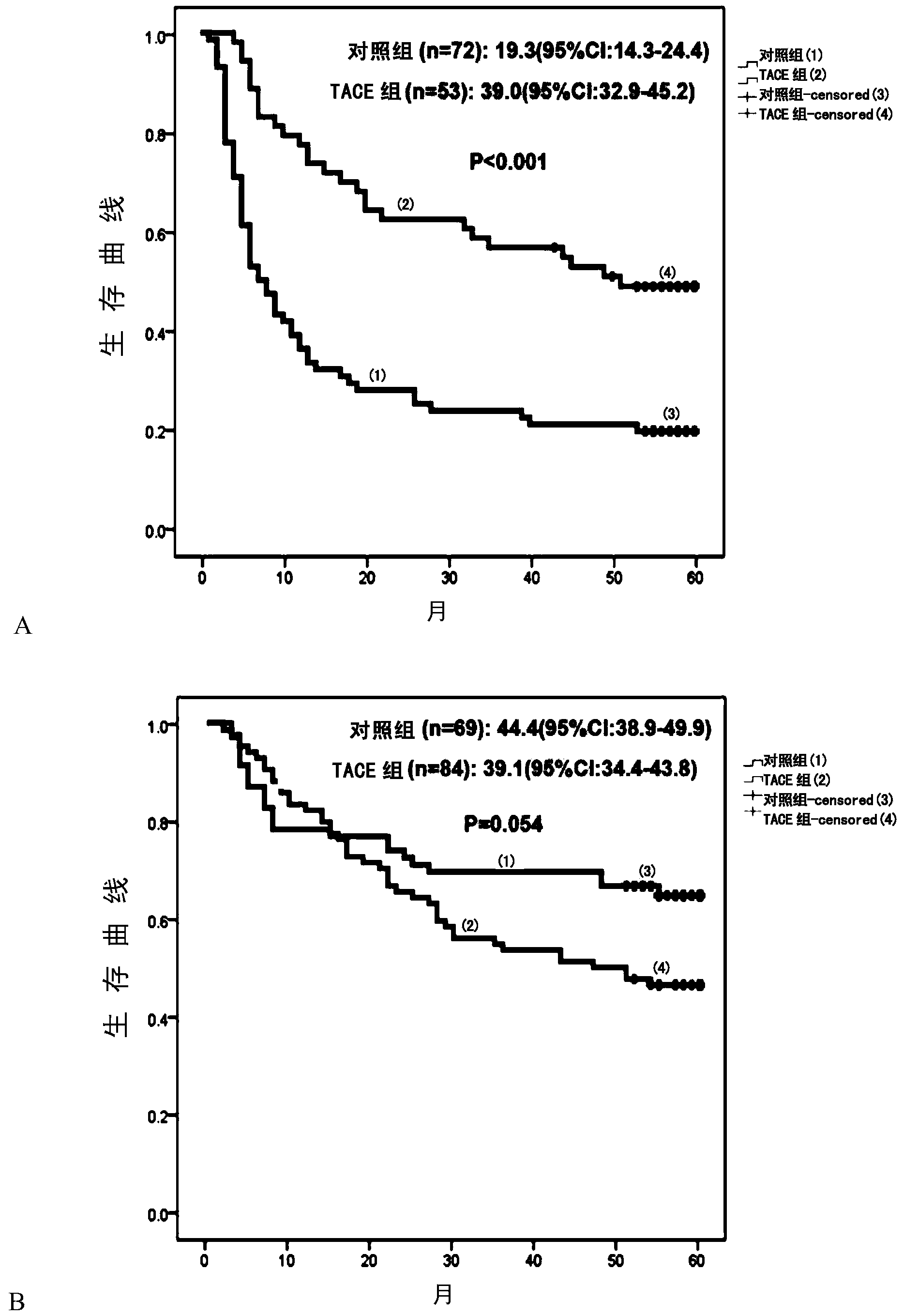Application of RNA (Ribose Nucleic Acid) polymerase II fifth subunit regulatory protein in preparation of reagent for prognosis of hepatocellular carcinoma or auxiliary TACE (Transcatheter Arterial Chemoembolization)
A technology of RNA polymerase and protein regulation, applied in the field of medical bioengineering, can solve problems such as unclear RMP correlation
- Summary
- Abstract
- Description
- Claims
- Application Information
AI Technical Summary
Problems solved by technology
Method used
Image
Examples
Embodiment 1
[0043] Embodiment 1, the expression of RMP in liver cancer tissue sample
[0044] A total of 278 surgically resected samples of hepatocellular carcinoma and 20 samples of portal vein tumor thrombus were selected from Dongfang Hepatobiliary Surgery Hospital. The characteristic parameters of 278 samples are shown in Table 1.
[0045] Table 1. Characteristic parameters of patients in the test group
[0046]
[0047] Using a polyclonal rabbit-derived RMP antibody (1:75, Proteintech), the expression level of RMP protein in tissues was detected by immunohistochemistry. The immunohistochemical method comprises the steps of detecting the expression level of RMP in paraffin-embedded hepatocellular carcinoma and adjacent normal liver tissues after surgical resection of primary hepatocellular carcinoma patients by immunohistochemical method. For antigen retrieval for 2 minutes, the primary antibody was incubated with polyclonal rabbit-derived RMP antibody 1:75, proteintech, and incu...
Embodiment 2
[0053] Embodiment 2, Kaplan-Meier method comparison RMP high and low expression postoperative survival time
[0054] According to the IRS score, the samples were divided into RMP high expression group and low expression group (according to the immunohistochemical staining intensity score, 0,1 points were defined as low expression; 2,3 points were defined as high expression), as shown in Table 2.
[0055] Table 2. Correlation between RMP protein expression and clinicopathological characteristics in the test group (n=278)
[0056]
[0057]
[0058] The P value in Table 2 indicates that the expression level of RMP was significantly correlated with gender, the expression level of RMP was significantly correlated with venous invasion, the expression level of RMP was significantly correlated with tumor size, the expression level of RMP was significantly correlated with BCLC stage, and the expression level of RMP was significantly correlated with BCLC stage. Significantly corre...
Embodiment 3
[0063] Example 3. Different RMP expression levels can determine the curative effect of postoperative adjuvant TACE
[0064] In the patients in Example 2, the postoperative implementation of adjuvant TACE was collected, stratified according to the RMP immunohistochemical score, and the prognosis and survival curve was drawn using SPSS18.0 analysis software. The results are as follows image 3 A-B.
[0065] The results showed that in the patients with high expression of RMP, postoperative adjuvant TACE can significantly prolong the survival time of patients, and the curative effect is significantly better than that of the control group; while in patients with low expression of RMP, postoperative adjuvant TACE does not improve patient outcomes.
PUM
 Login to View More
Login to View More Abstract
Description
Claims
Application Information
 Login to View More
Login to View More - R&D
- Intellectual Property
- Life Sciences
- Materials
- Tech Scout
- Unparalleled Data Quality
- Higher Quality Content
- 60% Fewer Hallucinations
Browse by: Latest US Patents, China's latest patents, Technical Efficacy Thesaurus, Application Domain, Technology Topic, Popular Technical Reports.
© 2025 PatSnap. All rights reserved.Legal|Privacy policy|Modern Slavery Act Transparency Statement|Sitemap|About US| Contact US: help@patsnap.com



